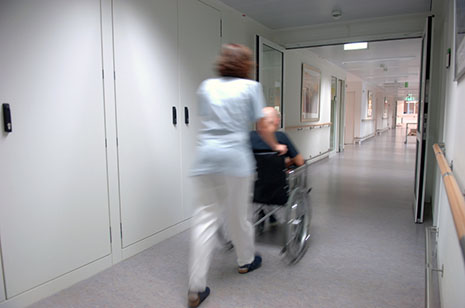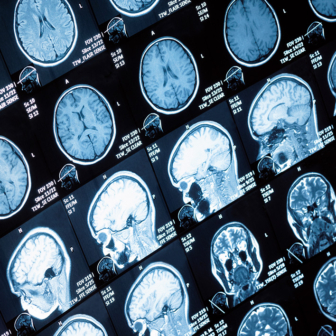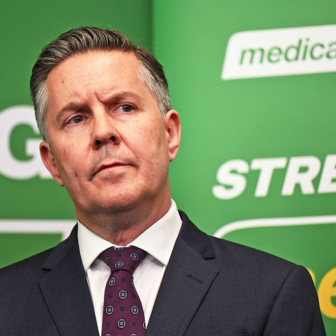THE THEATRE doors open, you’re wheeled in with one set of lungs, and four hours later you’re wheeled out with a completely different set. The theatre doors close, but another door opens to a totally new life, a life in which every breath is not a struggle, a flight of stairs is not an impossible challenge and you don’t have to carry a pager to alert you that your new organs are ready and waiting. This is the wonderful reality of being the recipient of a new set of organs. But the flip side of this new life is the end of someone else’s.
The decision to donate a loved one’s organs must be one of the most difficult of all. Western society handles end of life decisions poorly, and the suddenness of the events that lead to an organ donation leaves most families shocked and hurting. This helps to explain the relative dearth of organ donation in Australia, despite years of efforts to raise community awareness about the shortage of donors and the time people must spend on waiting lists until their lucky number comes up. Alarmist and unfounded views on the procedures for organ donation contribute to the public’s reluctance to become organ donors themselves. With donor rates of about 200 per year, or ten per million, and transplant waiting lists sitting at around 1700 people, some patients will never receive the organ they need and will die waiting.
Because of this need for organs, new procedures have been developed around the Western world to increase the pool of potential donors. Opt-out rather than opt-in systems are one approach; another is a process that forces people to decide one way or the other when they renew their driver’s licence. Both have been tried with varying degrees of success. More radical ideas include giving priority for organs to people who have already agreed to be an organ donor. But none of these ideas has been tried in Australia. In the case of kidneys, living related donors are available to increase the opportunity for recipients, but although the same option is technically possible for lung transplants it has not been tested in Australia either.
Changes in technology have increased the pool of donors. Better organ preservation solutions have been developed, and new organ transport devices can mimic the body’s cardiac function, keeping organs functioning over the sometimes long distances between donor and recipient. Advances in surgical techniques, including performing “domino” surgery in heart/lung transplantation, have increased the rate of use of the available organs.
But perhaps the most significant, and certainly the most controversial advance in organ donation and transplantation has occurred in the last four years with the advent of “donation after cardiac death,” or DCD. To understand the ethical controversies around this new development, it is essential to understand the process by which organ donation occurs – especially with some media outlets relaying rumours of patients having organs removed while they are still alive or families being pressured into giving consent for organ donation by overzealous medical staff. The depiction of organ donation processes in TV programs like Grey’s Anatomy further clouds the public’s perception of the organ donation process.
Essentially, in order for an organ donation to occur a complex series of steps is carried out by different teams of people, usually at different hospitals and often in different states. Potential organ donors are identified by medical staff, usually in the intensive care unit, at the point when patients are either brain dead or have no reasonable chance of emerging from a coma. To reach a diagnosis that a patient is brain dead – a state in which the higher functions of the cerebral cortex have stopped working but the heart is still beating – two different medical specialists must perform a number of tests to determine that brain activity has ceased. Neither specialist can be caring for the potential transplant recipient. If there is any doubt about the diagnosis then an angiogram of the brain will determine if there is blood flow through the cerebral tissues.
Once brain death has been established and consent from next of kin is obtained, the organ donor coordinators are notified. These doctors and nurses are independent of the hospital and work for Lifegift, an arm of the federal government’s organ and tissue donation network. They will assess the potential donor in consultation with the intensive care staff and liaise with the families to explain the process. The donor coordinators notify the transplant coordinators at the transplant units where the recipient is waiting. The recipient coordinators will then liaise with the transplant specialists to determine appropriate recipients for the organs. The final step is for specialist transplant surgeons to travel to the donor hospital, stop the patient’s heart and remove the organs and return with them to the transplant units where they will be implanted in the recipients.
In DCD donation, however, the patient is not brain dead. He or she is being heavily supported by medical technology, on a ventilator and usually on multiple medications to maintain blood pressure and heart rate. In this group of patients, usually with significant head injury, a decision must be made as to their likelihood of regaining consciousness.
In this process, the next of kin are the drivers of the timing and nature of the donation. It is often the families that suggest organ donation, even in cases where it is not medically appropriate. The family has an opportunity to say their goodbyes, and the ventilator is switched off and nature is allowed to take its course. If the heart does not stop spontaneously within ninety minutes then the procedure is abandoned. These patients will succumb within hours or days. If the heart does stop then the patient is moved to the operating theatre and the organs are removed for implantation.
The ethical issues that arise in donation after cardiac death are many, but essentially boil down to the question of whether it is morally reasonable to withdraw treatment from a non-brain dead person who has no feasible chance of recovery in order to use their organs to benefit others. Significant ethical debate has ensued around this issue, and there continue to be arguments at transplant conferences about the ethics of the decision. But while Australia’s donation rates remain as low as they are then it seems safest to be guided by John Stuart Mills’s utilitarian ideal, “the greatest good for the greatest number.” •




